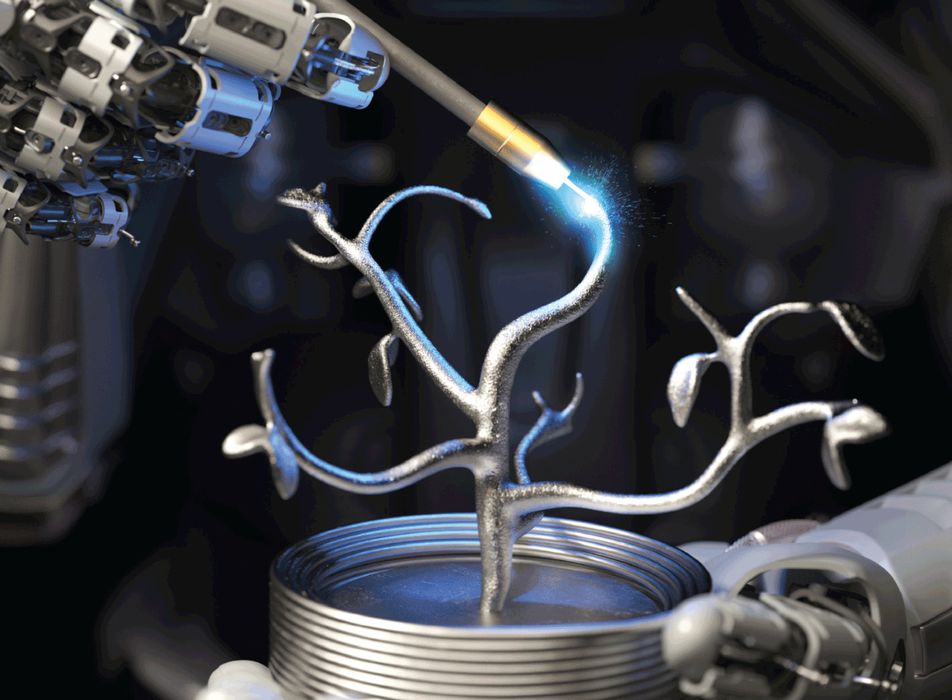
Researchers in Korea have developed a new metal 3D printing pen system for manufacturing.
When I write “3D printing pen” I am certain most readers will recall the handheld filament pens that were somewhat popular a few years ago. While this new research has developed a “3D printing pen”, it is utterly different from those handheld devices.
The new technology attempts to overcome limitations in current metal deposition processes.
In today’s metal 3D printing market there are two approaches: layer-by-layer or freeform. Most systems are layer-by-layer, and use laser sintering or binder jetting to build objects. More rare are the freeform systems that use robotic arms with a 3D print toolhead on the end effector to build 3D objects directly.
These freeform systems typically use either a powder or wire input material, which is heated immediately as it exits the nozzle. The heating can be done by powerful lasers or electrical arcs.
There are some constraints to this approach since the material can fall away in certain deposition orientations. However, the researchers have developed a new method that can print in any orientation.
Their system involves using a wire input feed, and an arc plasma to melt it. However, they’ve managed to tune the process precisely in order to take full advantage of the surface tension on liquid metal.
The result is a system that allows very precise deposition in any orientation, as you can see in the image at top. Further, the deposited metal forms solid structures with integrated microstructures, making the metal part quite strong.
You’ll note that the tree-like print they’ve produced in the top image is quite unlike most wire deposition metal 3D print systems. Typically the deposition is quite coarse, and often requires CNC milling to provide a proper surface finish.
That doesn’t seem to be the case with this new toolhead. The print is precise, delicate, and has finely detailed structures.
Normally if one requires a detailed metal 3D print you would use a system with the LPBF process. However, that is usually quite expensive due to the issues in handling toxic and explosive metal powder, as well as the considerable expense required for setting up a clean environment for printing with LPBF.
Wire deposition printing doesn’t have those issues, and in theory this new technology should provide a means for robotic wire metal deposition to produce high quality prints at lower prices than traditional LPBF processes.
Of course, this is still in the research stage and has yet to be commercialized. However, the tech seems quite intriguing and I suspect it will soon find its way into public use.
Via Wiley

Hey, Kerry.
I pointed to your article and 22,000 people took a look at it.
This is the link to the article.
https://www.linkedin.com/feed/update/urn:li:activity:7048280190556241920/
Some people are skeptical. Is there any way we can get more information? Some folks even want to see a time-lapse video. There is curiosity. Feel free to connect with me on LinkedIn. https://www.linkedin.com/in/rdchilders/